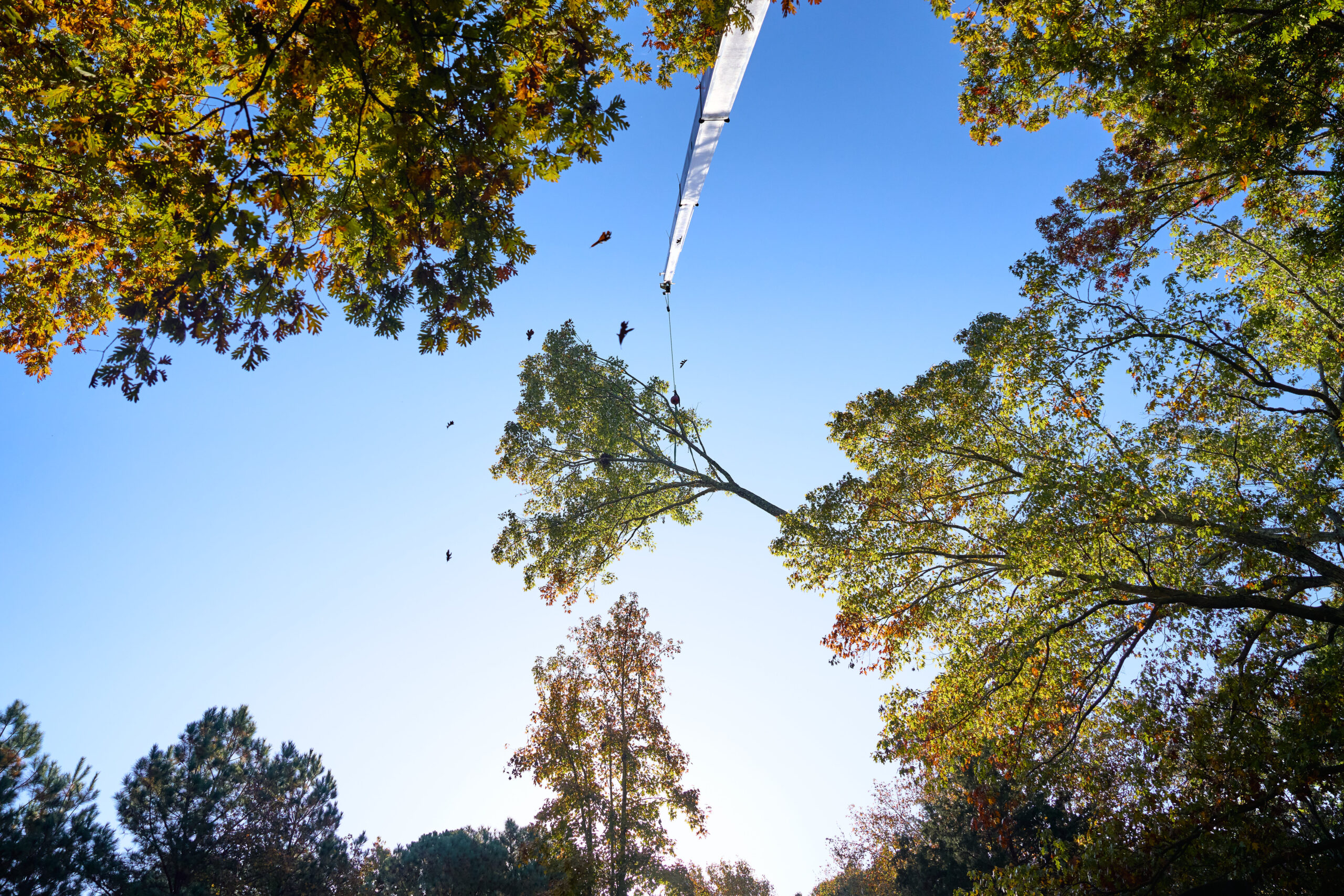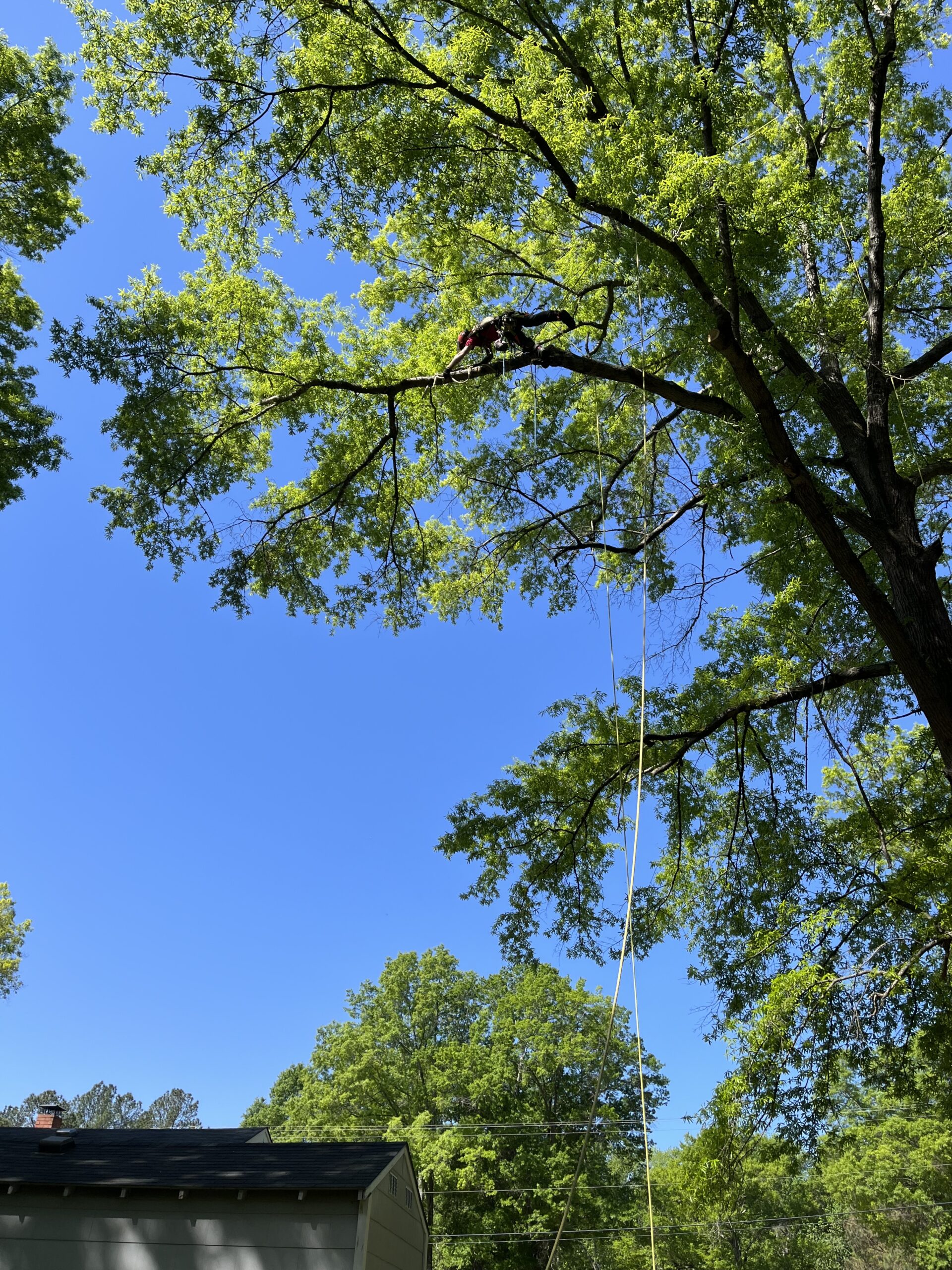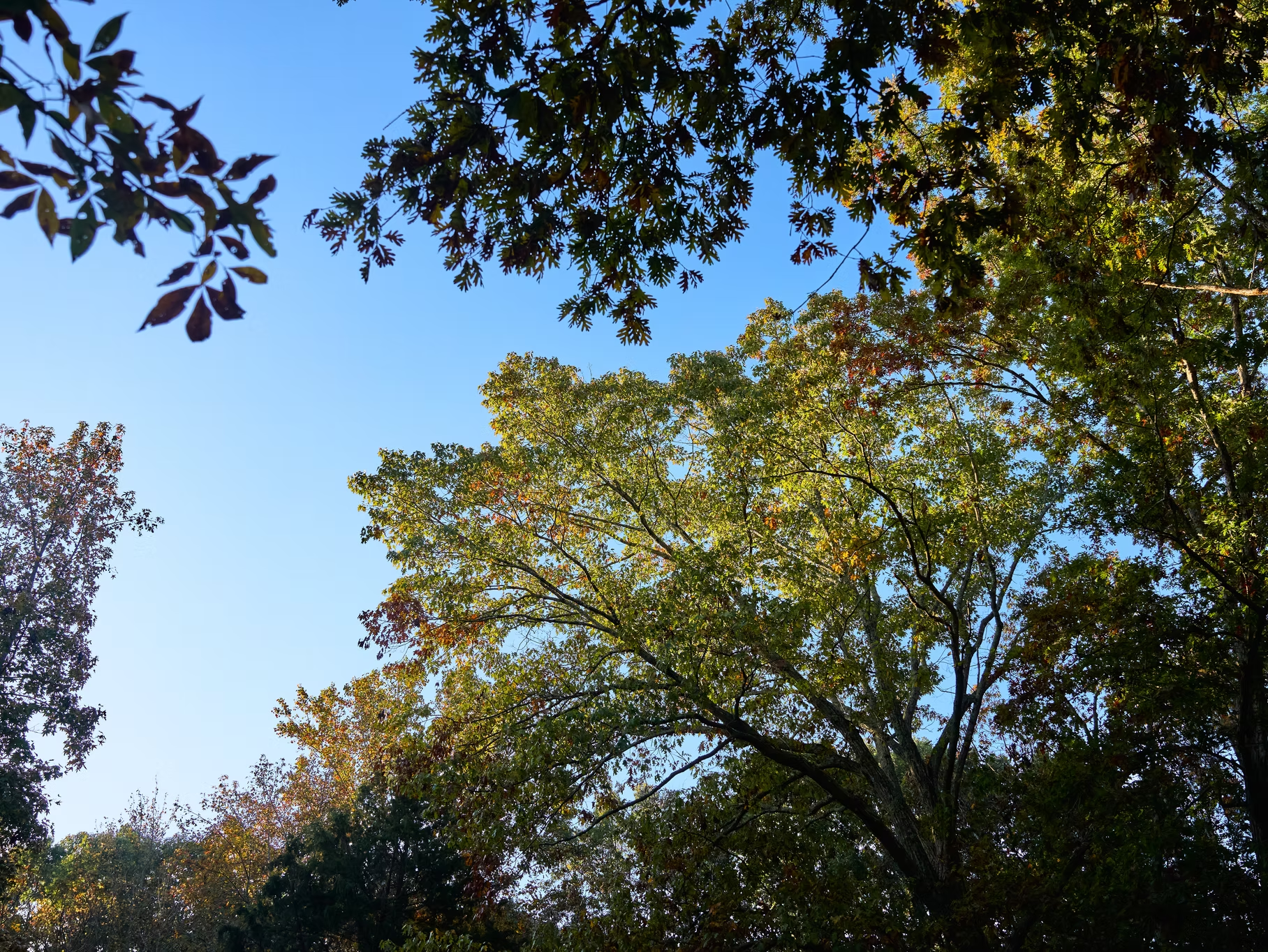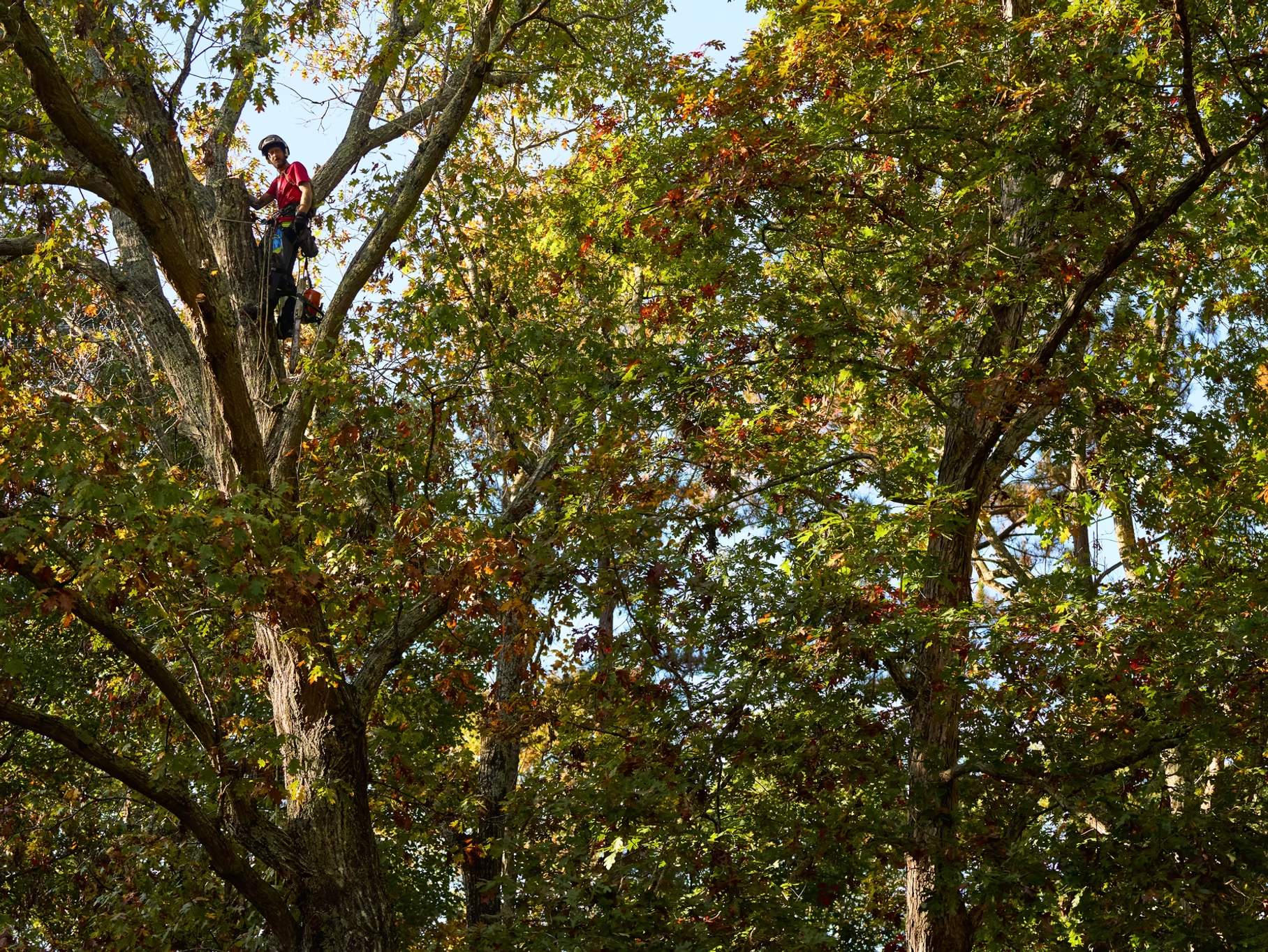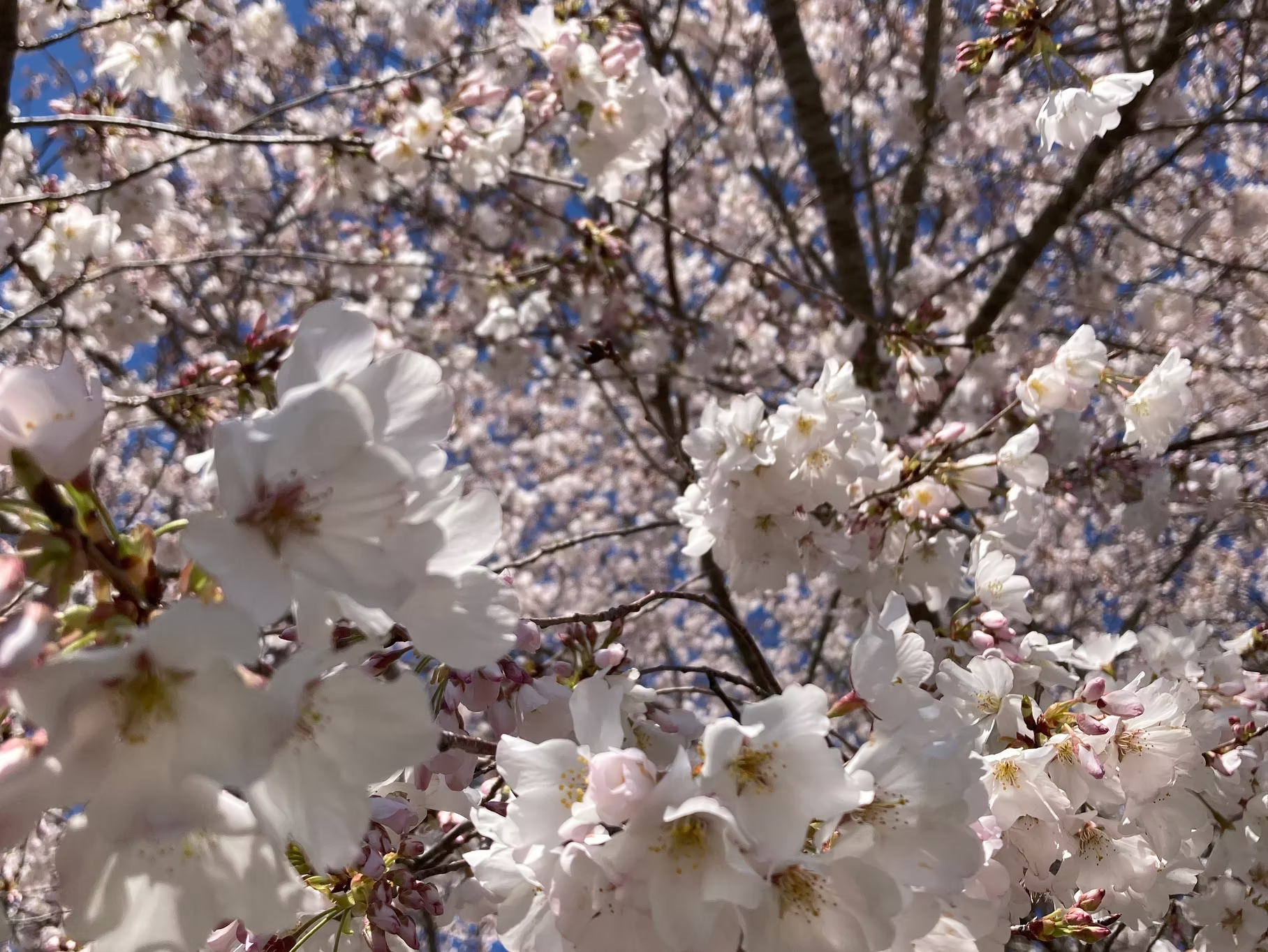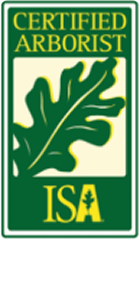Getting to the Root of Tree Health: Root Zone Rehab
Updated on: September 9, 2025
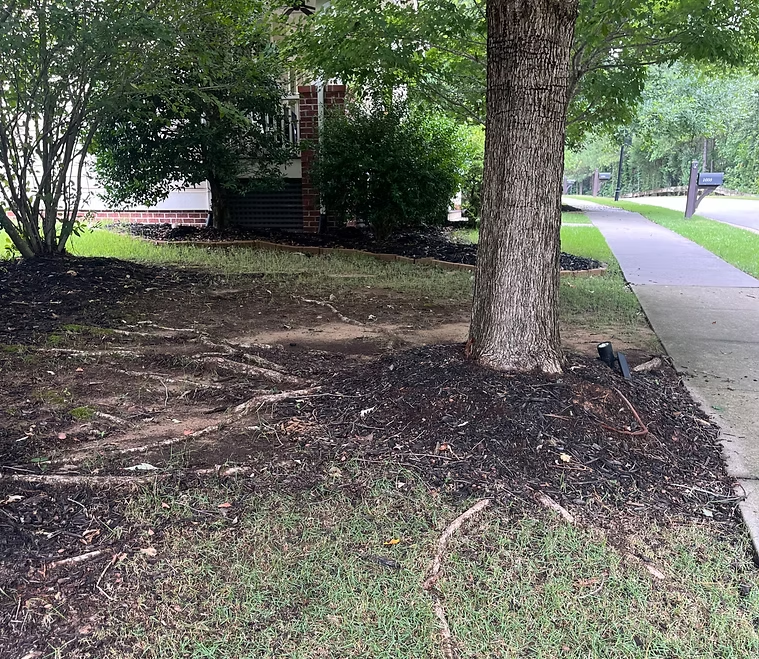
Stressed tree root system can lead to unhealthy trees.
We all love trees for the beauty and benefits they offer us and our landscapes– shade, beautiful blooms or leaf colors, habitat for local critters in the ecosystem, etc. But how often do we think about what’s happening under the surface? There’s a whole world of biological phenomena happening below the soil, in the root zone. Root systems are often silently struggling, impacted by factors like improper planting, limited space with concrete nearby, soil compaction and poor soil structure, root damage, and ultimately pests and diseases which capitalize on stressed trees.
What are the main problems for tree root zones?
1. Buried root collars are extremely common, and can occur either because of improper planting or mulching or due to grading changes during a construction or landscaping project. Trees should have a flare at the base of the trunk where it meets the soil, where the root system begins. If your tree’s trunk goes straight into the ground like a telephone pole– it is likely that tree health problems are forming underground (even if you can’t see anything wrong in the canopy yet).
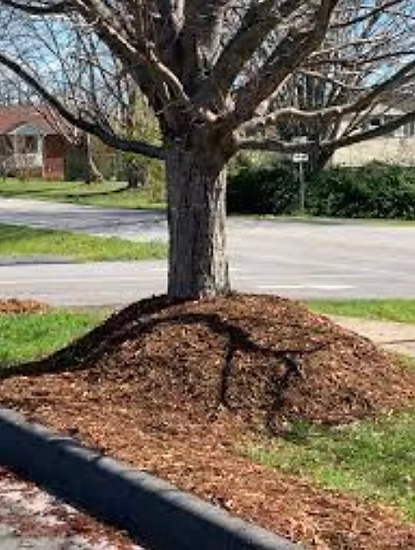
db827b_32da72549827487ba618e1e5e3ead45e~mv2 – Copy
Buried root collar
2. Girdling roots are another common issue for our landscape trees, almost always present where root collars have been buried for any length of time, and often present alongside compacted soils. Under the wrong conditions, tree roots can grow encircling the trunk rather than down and out into a healthy root system. These girdling roots become dysfunctional and begin to essentially strangle and starve the very tree they are meant to nourish and support. We often see girdling roots due to improper planting or mulching methods (which are unfortunately still very common).
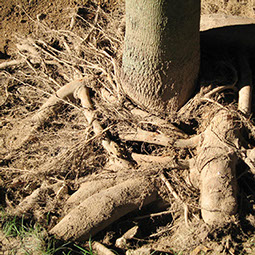
f65ede_44c5c93ace764ebfbb3f877903f07108~mv2
Unhealthy girdling roots can be easily exposed with air tools for pruning.
3. Soil compaction can be caused by construction, roadways or driveways, foot or machinery traffic, exposed soil without ground cover or mulch, or years of mulch build up without soil work. Compacted soil reduces air and water availability for tree root systems, sometimes creating anaerobic environments where certain diseases thrive, and can also contribute to erosion problems. Soil compaction is one of the worst and most common issues leading to all sorts of health decline in trees, and it can be easily addressed by an arborist with the right knowledge and tools, saving you the expense of removing a dying tree as well as preserving (priceless) mature trees that can’t be replaced in your lifetime.
4. Limited root zones or damaged roots are common in urban and suburban environments. We ask a lot of our trees! How can we expect a tree to grow without complaint in areas where their roots are restricted by concrete, gravel, or stone, sometimes on more than one side of the tree? Remember that septic work that had to be done near your mature white oak, which involved digging nearby and cutting some of its roots? The trench that had to be dug for an underground utility? The shed or addition that was built on top of its root system? The parking space near your hickory? The surface roots on your maple that the lawnmower always hits?
What can be done to prevent these trees from slowly dying? Enter the Air Spade or Soil Knife – a revolutionary tool for those in arboriculture that works via pressurized air without damage to the sensitive roots!
How a Tree Health Specialist Can Help
The AirSpade or Soil Knife is an air tool used in plant health care programs to powerfully fracture and de-compact soil without damaging soil structure or sensitive root systems. It is one of the only ways we can quickly make drastic improvements to the root zone of a tree without harming the roots. It is a chemical free, cost effective way to make a huge impact on tree health and longevity.
This tool can be used to expose root flares, do excavation work, revitalize soil oxygen levels, and expose damaged or girdling toots for pruning or redirection. It is also used for exposing pests and fungal or bacterial root diseases, which helps with accurate diagnosis and targeted treatment when possible.
The AirSpade or Soil Knife tool also exposes critical areas where intrusions of the roots of a tree can cause damage to sidewalks, buildings, roads, and other infrastructures and can help homeowners and builders tremendously to both correct and prevent root intrusions.
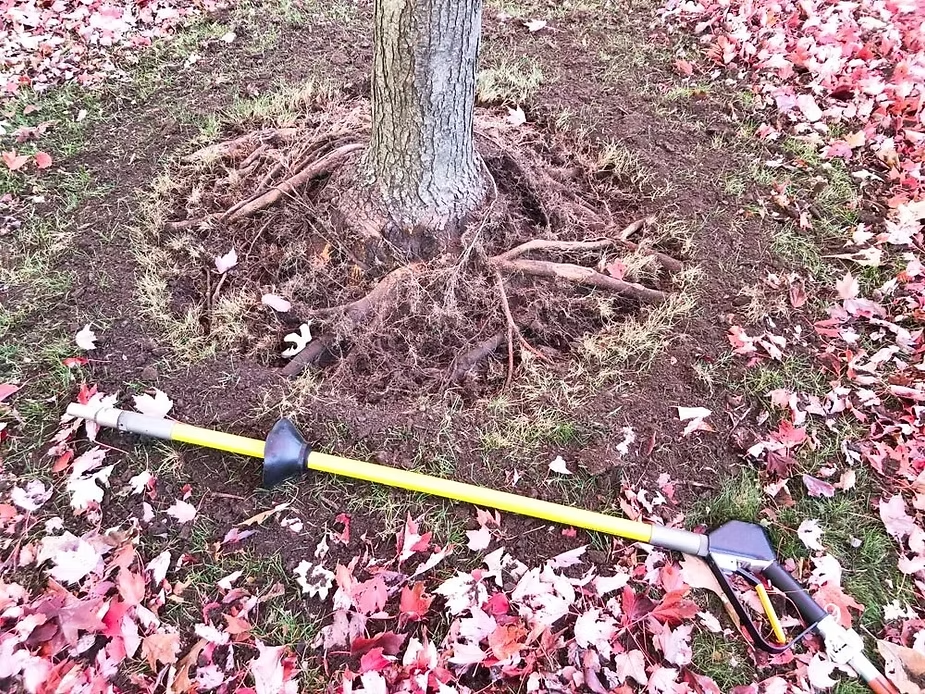
f65ede_86e5119c33e045a1b5f74c126d32bbe6~mv2
AirSpade tool uses compressed air to expose root problems and improve soil
conditions without damaging roots.
Where Is The AirSpade or Soil Knife Helpful?
We see tree problems caused or worsened by root and soil conditions around the Chapel Hill area very commonly. Girdling roots, soil compaction, loss of soil oxygen, fungal diseases, and root intrusions are all things we see every day working as arborists across Orange, Chatham, Alamance, and Durham counties. Root system care and soil work is useful for trees in rural and urban areas alike, for smaller young trees and for huge mature trees.
Our team has seen many problems that can be remedied with some intelligent soil work and the use of a compressed air tool like the Soil Knife. Unlike digging or other methods, these tools don’t damage fragile roots. A healthy root system and healthy tree means less opportunities for pests and diseases which may require pesticides to control later on. A little root rehab now limits chemical exposure or hazard to the environment and wildlife later.
A soil work project is also a great time to add some nutrients or other amendments to your tree’s root zone to support it even further!
Our Root Rehab Program
Take advantage of our Root Rehab program, especially through the dormant season when root pruning will be least disruptive to your trees (most important for larger trees or larger girdling roots). These interventions are useful for young saplings which may be planted incorrectly or in challenging soils, as well as for more established mature trees. We highly recommend this program for anyone who’s recently had construction, major landscaping, or grading changes occur near their trees!
What are the components of root zone rehabilitation?
- Root collar excavation and de-compaction with SoilKnife.
- Corrective root pruning: cutting girdling roots or pruning out unhealthy roots, roots growing into sidewalks, etc.
- Assessment of unhealthy or diseased roots and specific treatments for certain issues we may find.
- Introducing nutrients and/or organic matter: option to add Nutri-root seaweed based tree fertilizer, compost, or other beneficial materials.
- Mulching with arborist wood chips.
- Optional follow up in the spring to assess new growth and feed root system with a soil injection of Nutri-root.
- Enjoy your healthier, less stressed tree for years to come!
It’s all in the roots!
When it comes to the health and longevity of trees, happy roots are key. Root systems go unseen underground, so it can be easy to miss the early issues that will lead to obvious problems above ground later.
The amazingly powerful yet gentle capabilities of the AirSpade or Soil Knife tool make it much easier to address any issues within the root system without harming it or damaging the soil further.
At Lubbers & Sons Tree Care, we are focused on practices that are as environmentally sound and non-toxic as possible (while still effective) within our wide range of treatment options. We love the opportunity to care for a tree before the point where pesticides may be necessary to stop an impending death or severe damage of a beloved tree. Contact our team to learn more about root rehab and what can be done over the winter to ensure the healthiest spring for your trees!
Read more about relieving soil compaction with air-powered tools from the national park service.

Sosha
She is the Owner, Operator, and an ISA Certified Arborist with expertise in everything from plant health to administrative management. A true "wearer of many hats," her dynamic life doesn't stop when the workday ends. A professional MMA fighter, banjo player, and artist, she is living proof that you can be both tiny and mighty.
Recent Posts
Local Expertise. No Sales Pitch.
We’re local tree enthusiasts who care about the health of North Carolina’s trees – and our community. You’ll get
honest advice, thoughtful recommendations, and zero pushy sales tactics.
We’re local tree enthusiasts who care about the health of North Carolina’s trees – and our community. You’ll get honest advice, thoughtful recommendations, and zero pushy sales tactics.
Hazardous trees don’t wait. We offer financing options and flexible scheduling so you can
take care of the problem now, keeping your property and family safe.


